The Future of Asanas: Exploring Emerging Practices and Innovations
December 21, 2023 2023-12-21 12:39The Future of Asanas: Exploring Emerging Practices and Innovations

The Future of Asanas: Exploring Emerging Practices and Innovations
Welcome to the future of asanas! Asana practice has come a long way from its traditional roots, evolving to meet the changing needs and preferences of modern practitioners. With emerging practices and innovative technologies, we are witnessing an exciting transformation in how we approach our yoga practice. From virtual reality experiences to tailored asanas for specific populations, this blog post explores some of the most promising trends that will shape the future of asana practice. So buckle up and get ready for a journey into what’s next on the horizon for asanas!
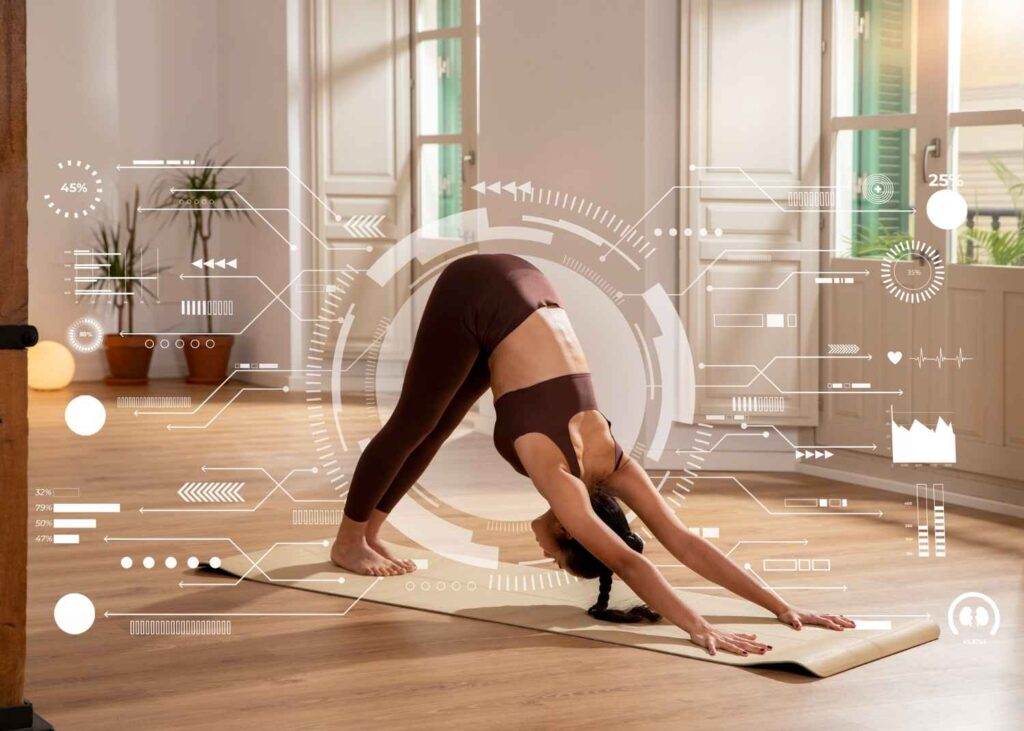 Source: Freepik
Source: Freepik
The Evolving Landscape of Asana Practice
The practice of asanas has been around for centuries, but in recent years it has undergone significant changes. As the popularity of yoga continues to grow, so does the number of innovators who are pushing the boundaries of traditional asana practice.
One major trend in the evolving landscape of asana practice is a shift towards more personalized and customized experiences. Rather than following a set sequence or style, many practitioners are now seeking out teachers who can tailor their instruction to individual needs and goals. Another emerging trend is an increased focus on alignment and injury prevention. Many modern yogis recognize that certain poses can be risky if not approached mindfully, so they’re working to create new techniques and modifications that make these postures safer while still delivering all their benefits.
There’s also been a growing interest in exploring how other movement practices can be integrated with traditional yoga postures. Cross-training with disciplines like Pilates or martial arts can help practitioners build strength and improve flexibility in ways that complement their regular yoga routine.
It’s clear that asana practice is evolving rapidly – driven by both technological innovations and human creativity – which will continue shaping its future for years to come.
Technology and Asana Practice
With technology taking over every aspect of our lives, it was only a matter of time before it revolutionized the way we practice asanas. Technology has enabled us to take our yoga practice beyond the traditional studio setting and into the virtual world.
Virtual reality and augmented reality have opened up new possibilities for practicing asanas. With VR headsets, practitioners can immerse themselves in a 360-degree environment that simulates different settings like an ocean beach or a mountain top. Augmented reality can be used to overlay digital images on real-world environments during asana practice. Mobile apps and online platforms have made guided sessions accessible from anywhere at any time. Practitioners can choose from a wide variety of classes ranging from beginner-level to advanced level practices with just a few taps on their phone screens. Technology has also enabled us to track progress in our asana practice through wearable devices that monitor heart rate, breathing patterns, and other key metrics. This data helps practitioners understand how their body is responding to each pose and make adjustments accordingly.
Technology has changed the way we approach asana practice by making it more accessible, immersive, and personalized than ever before. As technology continues to evolve, we can expect even more innovative ways of integrating it into our yoga practices.
Virtual Reality and Augmented Reality in Asana Experiences
The introduction of technology in the world of yoga has opened up a plethora of new possibilities. One such innovation is the integration of virtual reality and augmented reality in asana experiences. These emerging technologies are transforming traditional yoga practices into a more immersive and engaging experience.
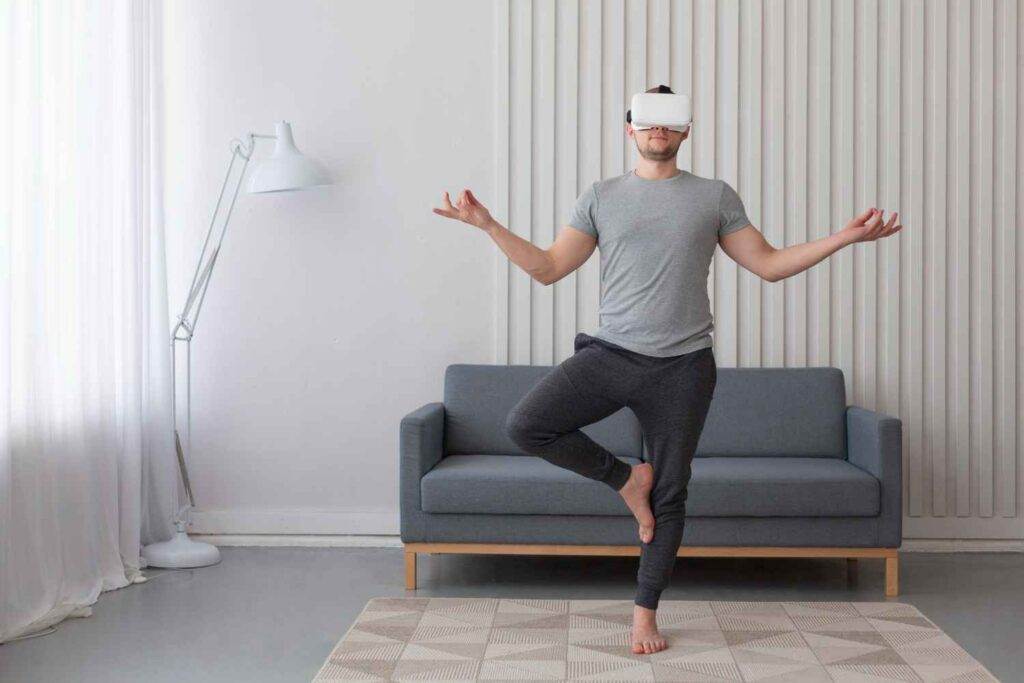 Source: Freepik
Source: Freepik
Virtual reality (VR) provides an immersive environment for practitioners to perform their asanas without any physical limitations. This technology allows users to practice yoga from anywhere, providing them with access to classes that they may not have been able to attend otherwise. With VR, yogis can visualize themselves performing complex poses with ease and get real-time feedback on their alignment.
Augmented Reality (AR), on the other hand, enhances one’s surroundings by overlaying digital images onto what exists in real life. In the context of yoga, AR can provide visual cues or prompts for practitioners during their practice. AR also enables Yoga teachers to demonstrate proper alignment and adjustments virtually through 3D models.
Both VR and AR offer unique opportunities for yogis looking to enhance their practice while having fun exploring new ways of practicing asanas outside traditional studio settings. These innovative technologies have transformed how we approach our yoga practices by providing us with greater accessibility and interactivity than ever before!
Mobile Apps and Online Platforms for Guided Asana Sessions
In today’s fast-paced world, people are turning to technology for convenience and accessibility. This has also impacted the way we practice yoga asanas. Mobile apps and online platforms have made it easier than ever to access guided asana sessions from anywhere at any time.
These apps and platforms offer a variety of options for users, including pre-recorded classes or personalized sessions with live instructors. Some even allow users to track their progress and set goals for their practice. With these tools, individuals can tailor their practice to fit their needs and schedules without having to attend in-person classes. It also opens up the opportunity for individuals who might not have access to traditional studios or teachers.
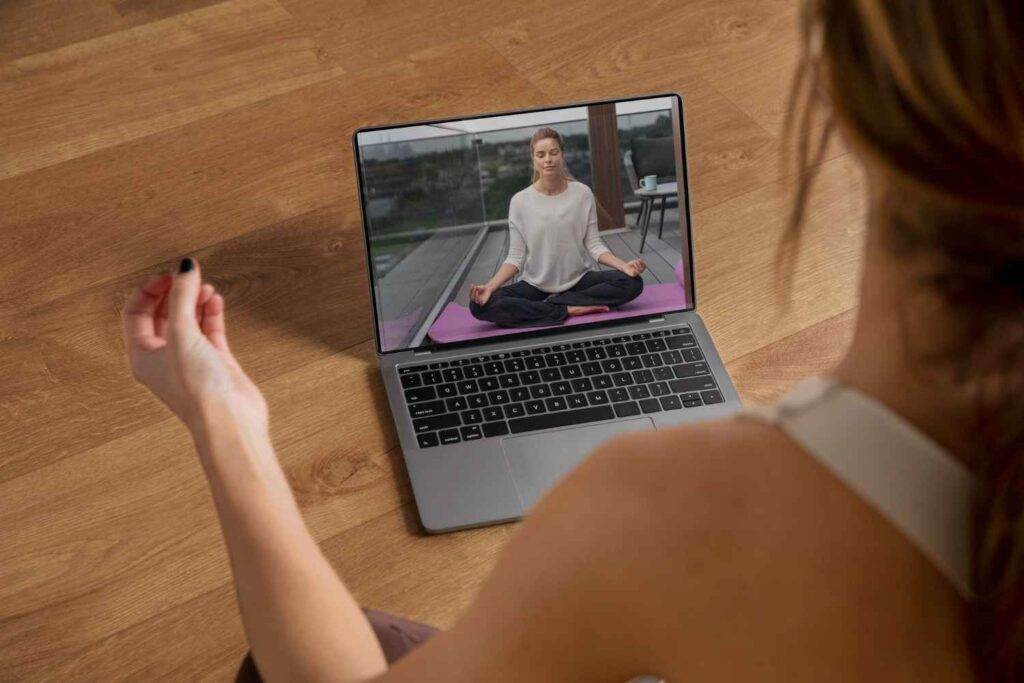 Source: Freepik
Source: Freepik
However, it is important to note that while these resources can be beneficial, they should not replace in-person instruction entirely. Asanas require proper alignment and adjustments that an app cannot provide. Mobile apps and online platforms offer a convenient option for those looking to enhance their asana practice outside of traditional studio settings.
Mind-Body Integration in Asanas
Asanas, the physical postures of yoga, have been practiced for thousands of years and are known to have numerous health benefits. In recent times, there has been a growing emphasis on the connection between the mind and body in asana practice.
Mind-body integration is not just about focusing on breathing or practicing mindfulness; it’s also about being aware of how your body feels during each posture. As you move through different poses with conscious awareness, you can develop a deeper understanding of your body’s strengths and limitations. By integrating awareness into your practice, you can learn to manage stress better and promote positive mental health outcomes. Studies show that regular asana practice can improve mood disorders like anxiety and depression by reducing cortisol levels in the body. Moreover, many yoga practitioners believe that incorporating meditation into their daily routine helps them cultivate greater self-awareness and acceptance. By developing this inner peace through asanas’ mindful execution while aligning breath work within each pose – we become more attuned to our bodies’ needs.
Mind-body integration is an essential concept in modern-day yoga practices. It allows us to tap into our full potential by fostering a deeper understanding of ourselves physically and mentally. By incorporating these principles into our daily lives both on/off the mat – we create space for growth towards optimal well-being holistically!
Asanas for Mental and Emotional Well-being
Asanas not only benefit our physical health but also help in improving mental and emotional well-being. Yoga practices such as meditation, pranayama, and asanas have shown to improve mood, decrease anxiety levels and reduce stress.
Certain yoga poses like Balasana (Child’s Pose), Uttanasana (Standing Forward Bend) and Adho Mukha Svanasana (Downward-Facing Dog) are known for their calming effect on the mind. These poses help in lowering cortisol levels which is a hormone that is produced when we experience stress.
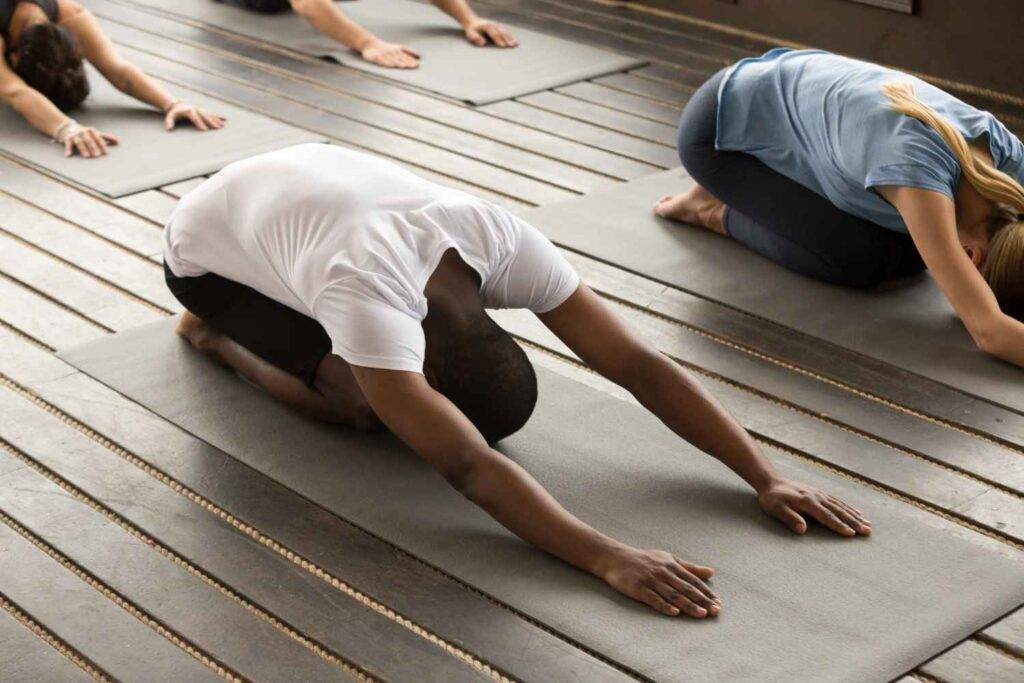 Source: Freepik
Source: Freepik
Incorporating specific asanas into your regular practice can significantly contribute towards better mental health. It is important to note that these practices should complement professional medical advice if required.
Yoga Therapy and its Application in Mental Health
Yoga therapy is a growing field that has gained recognition in recent years as an effective treatment for mental health issues. Unlike traditional talk therapy, yoga therapy incorporates physical movement and breathing exercises to help individuals manage their mental health symptoms.
Research shows that yoga therapy can be beneficial for individuals living with depression, anxiety, PTSD, and addiction. Yoga postures help release tension held in the body while deep breathing encourages relaxation and reduces stress. Additionally, practicing yoga regularly helps regulate the nervous system by activating the parasympathetic response which promotes feelings of calmness.
Incorporating mindfulness into yoga practice further enhances its therapeutic benefits. By focusing on the present moment without judgment or distraction, individuals learn to quiet their minds and become more aware of their thoughts and emotions. This heightened awareness allows them to identify negative thought patterns and behaviors they may not have been aware of before.
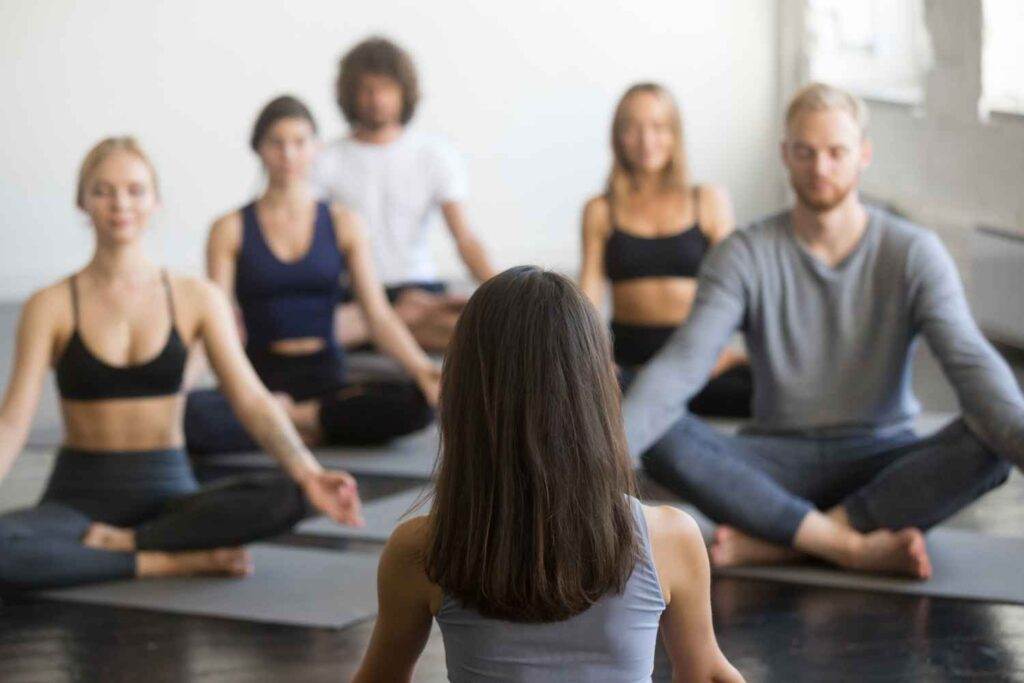 Source: Freepik
Source: Freepik
Incorporating yoga therapy into mental health treatment plans provides clients with additional tools to manage their symptoms outside of traditional talk therapy settings. The combination of physical movement, breathwork, mindfulness practices creates a holistic approach towards healing both mind and body.
Asanas for Specific Populations
Asanas are a powerful tool for promoting physical and mental well-being that can be adapted to suit the needs of specific populations. Individuals with disabilities, diverse body types, and varying abilities can all benefit from practicing asanas.
For individuals with disabilities, modified poses and variations can help them develop strength, flexibility, and balance while minimizing potential risks. Yoga props such as blocks, straps or blankets may also be used to provide additional support. Modifications are also helpful for individuals with diverse body types who might have difficulty performing certain poses due to their unique anatomy. These modifications allow individuals to practice at their own pace without feeling uncomfortable or discouraged.
In addition to these modifications, teachers should strive towards creating inclusive environments where everyone feels welcome regardless of ability or background. This includes using language that is non-judgmental and avoiding making assumptions about what someone’s body is capable of doing.
Adapting asana practices for specific populations requires an open-minded approach that prioritizes accessibility and inclusivity. By embracing diversity in our yoga communities we can ensure that everyone has access to the many benefits of this ancient practice.
Accessible and Inclusive Asana Practices
In recent years, the yoga community has made strides towards creating accessible and inclusive asana practices. Traditionally, yoga classes were not always welcoming or accommodating to individuals with diverse body types or abilities. However, this is changing.
Many studios are now offering adaptive asana classes for individuals with disabilities. These classes often use props such as blocks, straps, and blankets to modify poses or offer alternative options that make them more achievable for those with physical limitations. Additionally, there is a growing movement towards creating safe spaces for marginalized communities within the yoga world. This includes LGBTQ+ friendly classes and trauma-informed practices that prioritize mental health and emotional well-being.
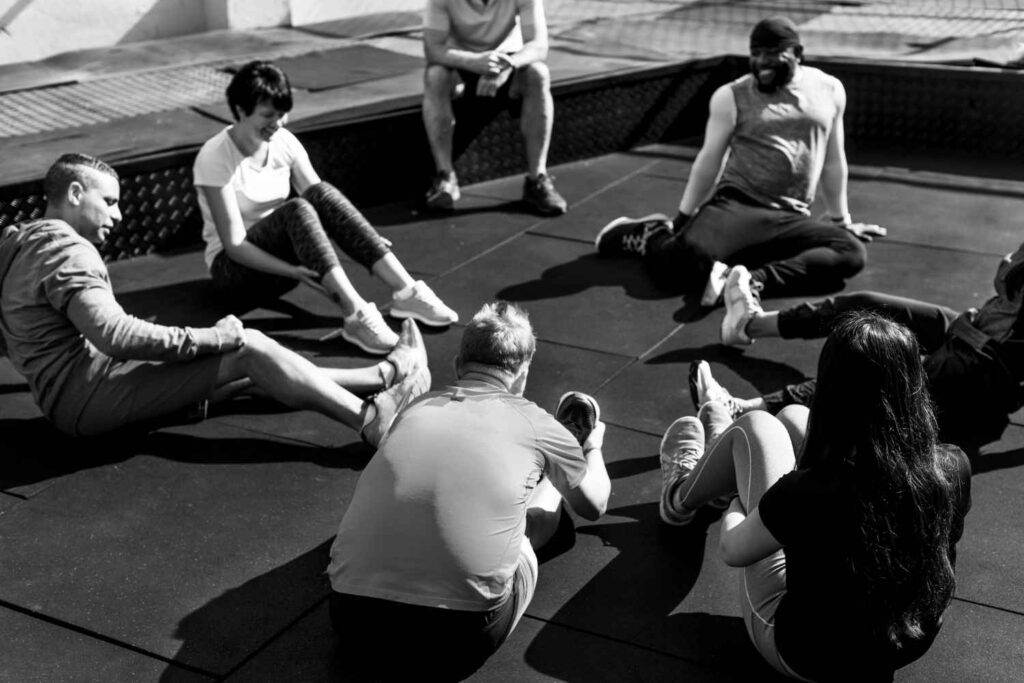 Source: Freepik
Source: Freepik
It’s important to note that accessibility does not just refer to physical ability but also financial barriers. Some studios are implementing sliding-scale pricing options or donation-based models to ensure that everyone can access the benefits of yoga regardless of their income level.
These changes in the industry are a step in the right direction towards making yoga more inclusive and accessible for all.
Asanas for Individuals with Disabilities
Asanas are an inclusive practice, and the yoga community is working to make it accessible for people with disabilities. Adaptive yoga classes have been developed that cater to individuals with various physical limitations such as spinal cord injuries, amputations, or cerebral palsy. These classes modify traditional poses and use props to create a safe and supportive environment.
Poses like Chair Pose can be modified by using a chair for support or balance assistance. For those who use wheelchairs, they can still participate in yoga by performing seated poses like Seated Forward Fold or Seated Spinal Twist. Poses that focus on stretching muscles can help reduce pain caused by chronic conditions like arthritis.
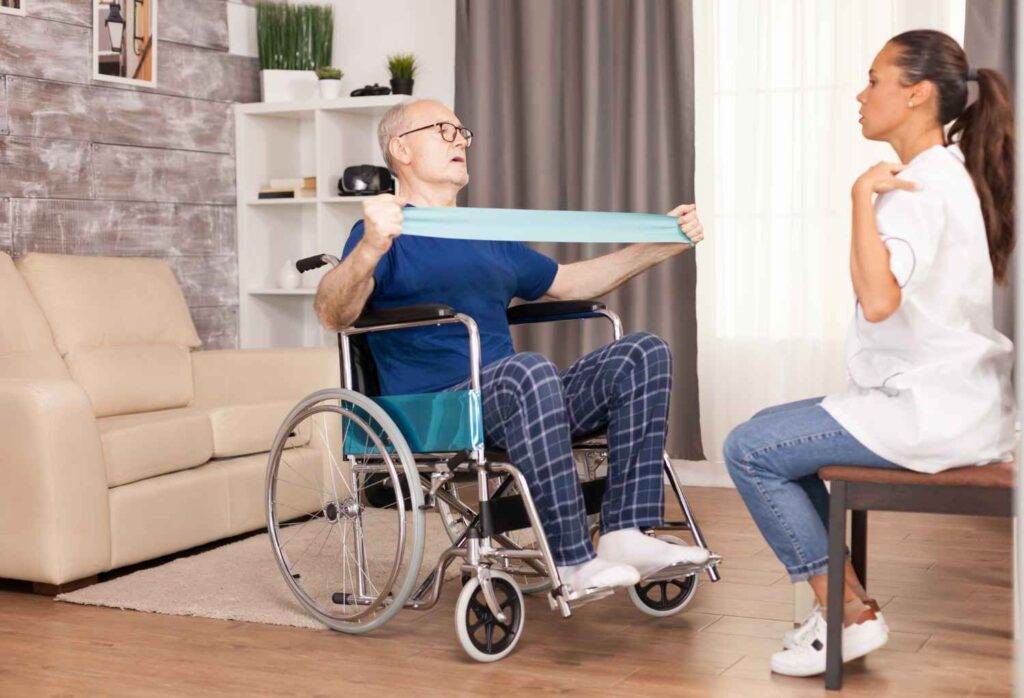 Source: Freepik
Source: Freepik
Adaptive yoga provides opportunities for people with disabilities to improve their overall well-being through mind-body integration techniques without having to worry about physical limitations hindering them from participating in asana practices.
With emerging technology becoming more common in the fitness industry, virtual reality (VR) may hold promise for adaptive yoga students who might not have access to an instructor nearby. VR creates experiences where individuals can feel fully immersed in the class setting while still receiving guidance from a professional instructor.
Asana practices are being made even more inclusive with efforts towards adapting practices suitable for those with disabilities. The benefits of these modifications are immense; good mental health along with improved flexibility and strength which leads to better physical health outcomes despite any disability-related challenges one might face.
Modifications and Variations for Diverse Body Types and Abilities
Asana practice is a holistic approach to achieving physical and mental well-being. However, not all bodies are the same. Some have limitations due to injuries, disabilities or unique body types that can make certain poses challenging or impossible.
Fortunately, modifications and variations of asanas can be made to accommodate individuals with different abilities. Teachers must understand that it’s essential to create an inclusive space where everyone feels comfortable practicing without feeling left behind. Modifications may include using props such as blocks, straps or blankets for support during poses. Variations may involve adjusting alignment or changing the pose altogether.
It’s important for teachers to encourage students to listen to their bodies and honor their limits while still challenging themselves appropriately. This way, everyone can experience the benefits of yoga regardless of their body type or ability level.
Adapting asana practices for diverse populations is crucial in creating an inclusive yoga community that celebrates differences rather than excluding them.
The Future of Asana Education and Training
The world of yoga is constantly evolving, and as the practice grows in popularity, so does the need for highly trained instructors. Asana education and training are crucial to ensure that teachers have a deep understanding of the postures they teach and can safely guide their students through them.
• One emerging trend in asana education is the integration of modern educational approaches such as experiential learning techniques, online courses, and interactive workshops. These methods provide more engaging and immersive learning experiences for aspiring teachers.
• Another important aspect of future asana education is the incorporation of diverse perspectives on yoga philosophy. This includes teachings from different lineages, cultures, religions or spiritual traditions. It ensures that students receive comprehensive knowledge about what Yoga really represents beyond physical movements.
As part of this evolution in teacher training programs it’s also necessary to address cultural appropriation concerns related to certain practices or beliefs linked with yogic culture. These innovations offer exciting opportunities for both new and experienced yoga teachers alike who wish to deepen their understanding of this ancient practice while staying up-to-date with current trends and best practices.
Integrating Modern Educational Approaches in Asana Teacher Training
As asana practice evolves, so too must the training of teachers. While traditional methods have their place, there is an increasing need to integrate modern educational approaches in asana teacher training.
• One such approach is the use of experiential learning techniques. This involves providing trainees with opportunities to engage in hands-on and interactive activities that enable them to explore and understand key concepts more deeply.
• Another important technique is the incorporation of technology into training programs. With online platforms and mobile apps offering easily accessible resources, aspiring teachers can learn at their own pace and convenience.
• In addition, it’s crucial for teacher-training programs to emphasize inclusivity and diversity. Teachers must be equipped with tools to modify asanas for various body types and abilities, while also creating safe spaces for individuals from marginalized communities.
• Ongoing professional development opportunities should be integrated into teacher-training programs so that instructors continue honing their skills even after certification.
By integrating these modern educational approaches in asana teacher training programs, we can ensure that yoga continues its evolution towards a more inclusive and accessible future.
Conclusion
As we have explored in this article, the future of asana practice is exciting and full of innovations. From technology to mind-body integration and accessible practices for diverse populations, there are endless possibilities for yoga practitioners and teachers alike. The emergence of virtual reality and augmented reality can revolutionize our understanding of asanas by providing immersive experiences that enhance our physical, mental, and emotional well-being. Online platforms and mobile apps offer greater accessibility to guided sessions from anywhere at any time.
Moreover, the focus on mind-body integration through yoga therapy presents a promising opportunity to address mental health concerns with evidence-based approaches. And the shift towards inclusive practices ensures that everyone can experience the benefits of yoga regardless of their abilities or body types.
Integrating modern educational approaches in teacher training programs will enable instructors to keep up with emerging trends while maintaining traditional values. As such, they will be better equipped to guide students on their journey towards optimal physical health, inner peace, and spiritual growth.
Embracing emerging practices and innovations in asanas will help us deepen our connection between body and mind while promoting holistic wellness. The future looks bright for yogis worldwide!
Search
Wellness Topics
This Just In
- Reimagining Traditional Asanas: Modern Variations and Adaptations December 21, 2023
- Iconic Asanas from Classical Yoga Texts: Patanjali and Beyond December 21, 2023
- Exploring the Benefits of Asanas: The Path to Holistic Well-Being December 21, 2023
- The Future of Asanas: Exploring Emerging Practices and Innovations December 21, 2023
- Discovering Yoga’s Roots: Asanas in Vedas and Upanishads December 21, 2023

